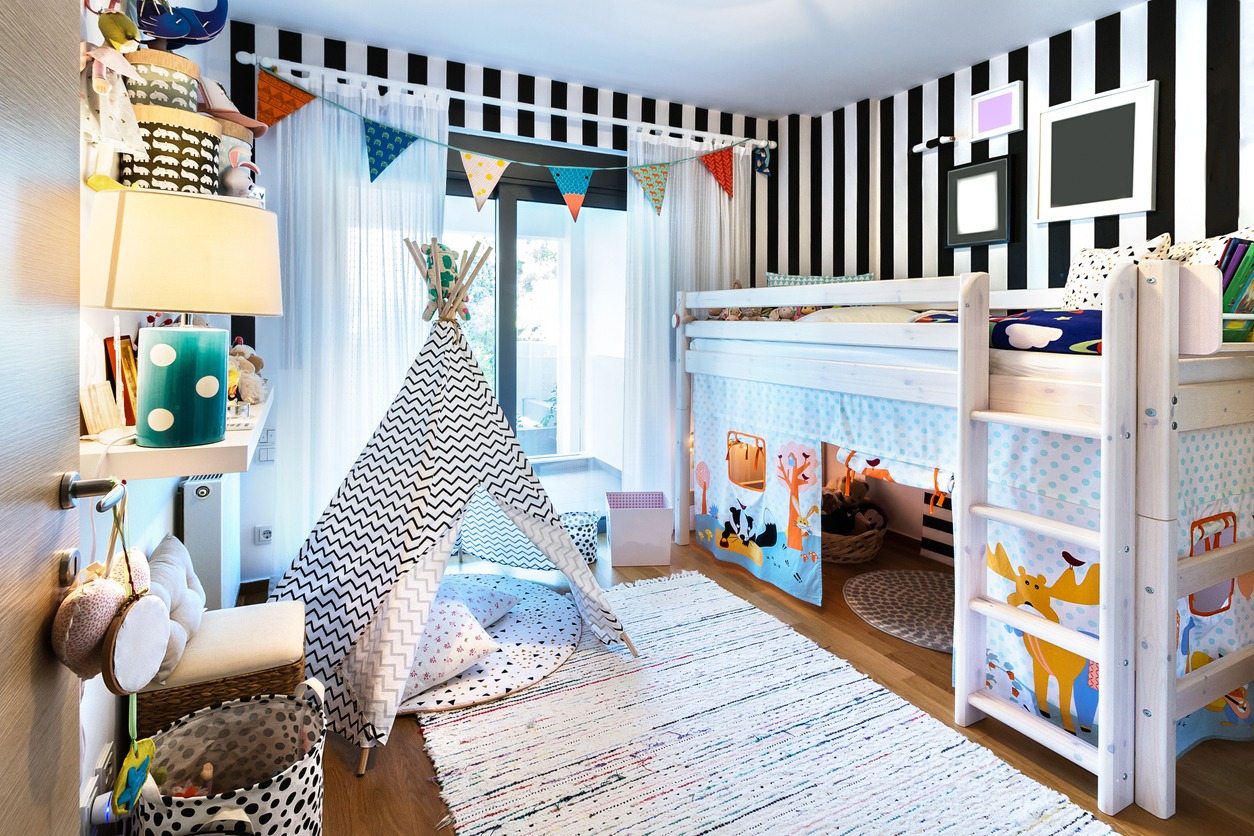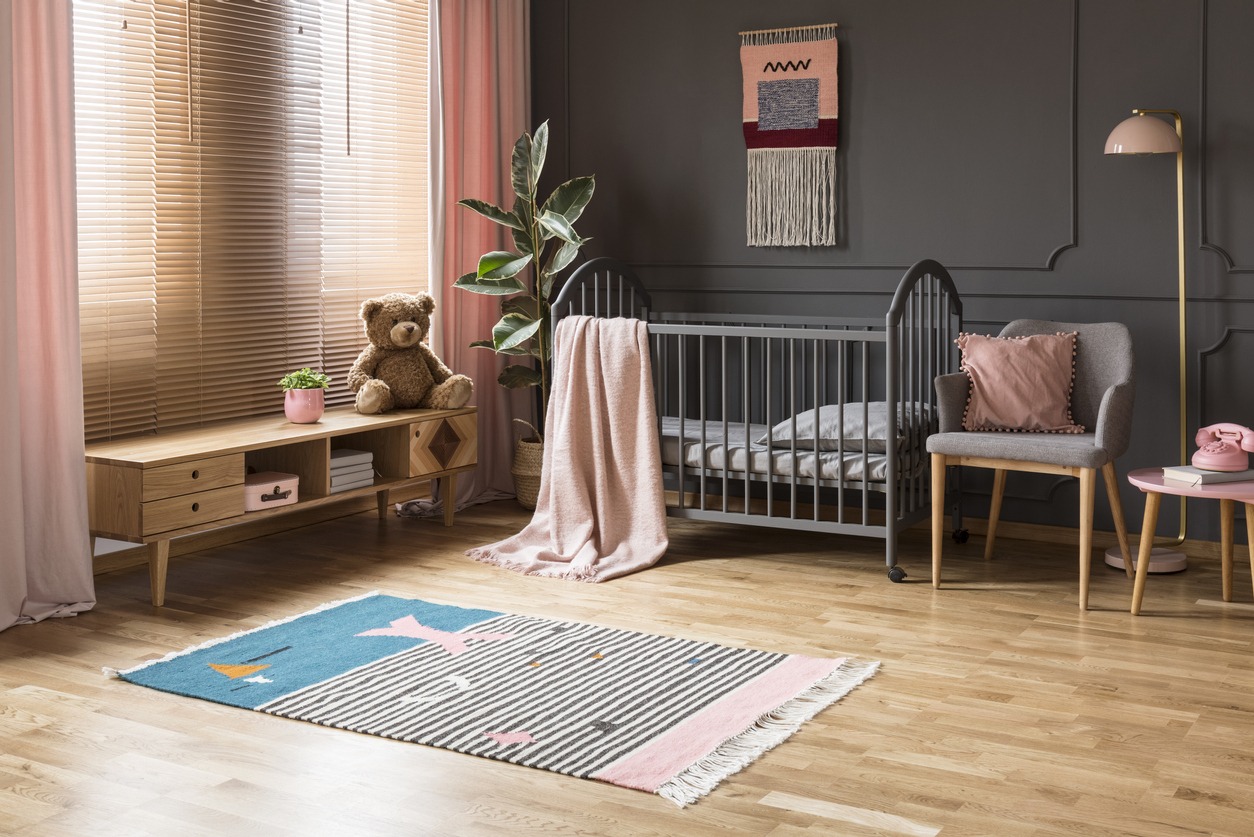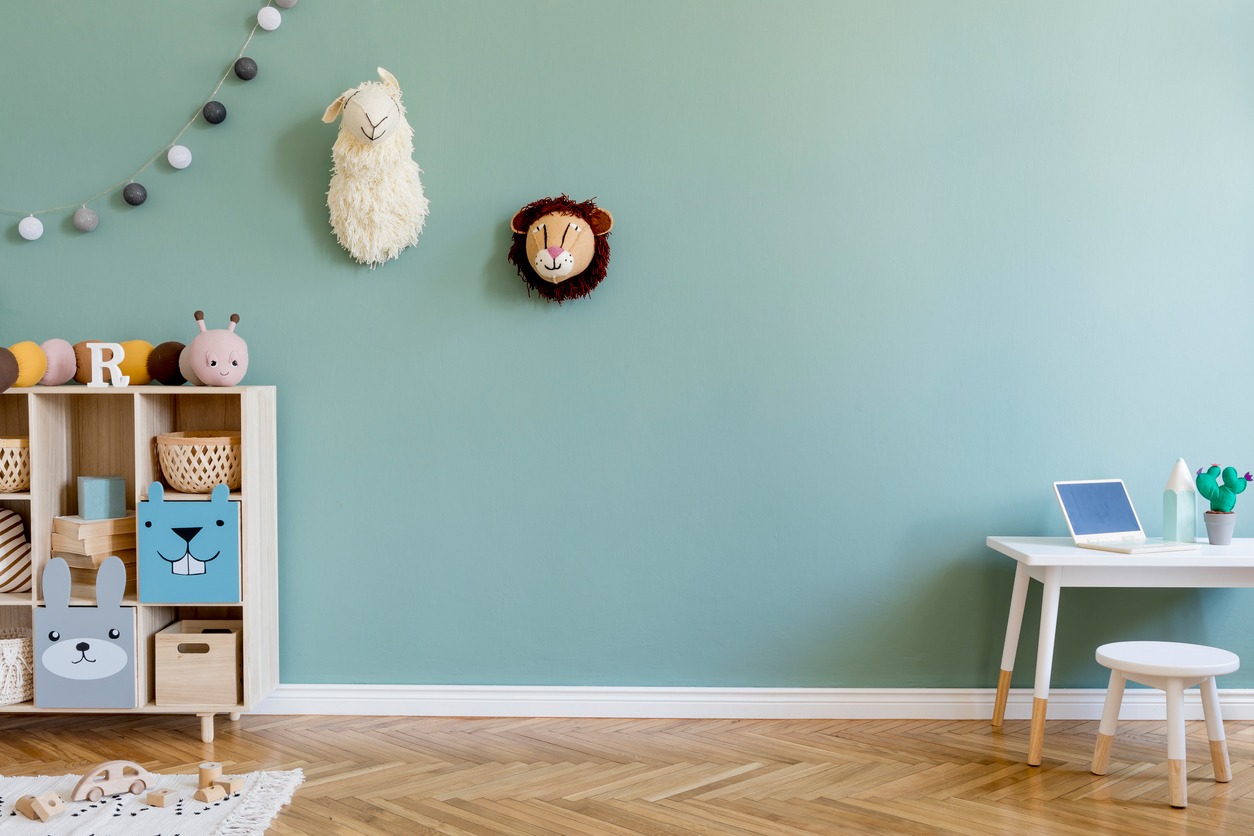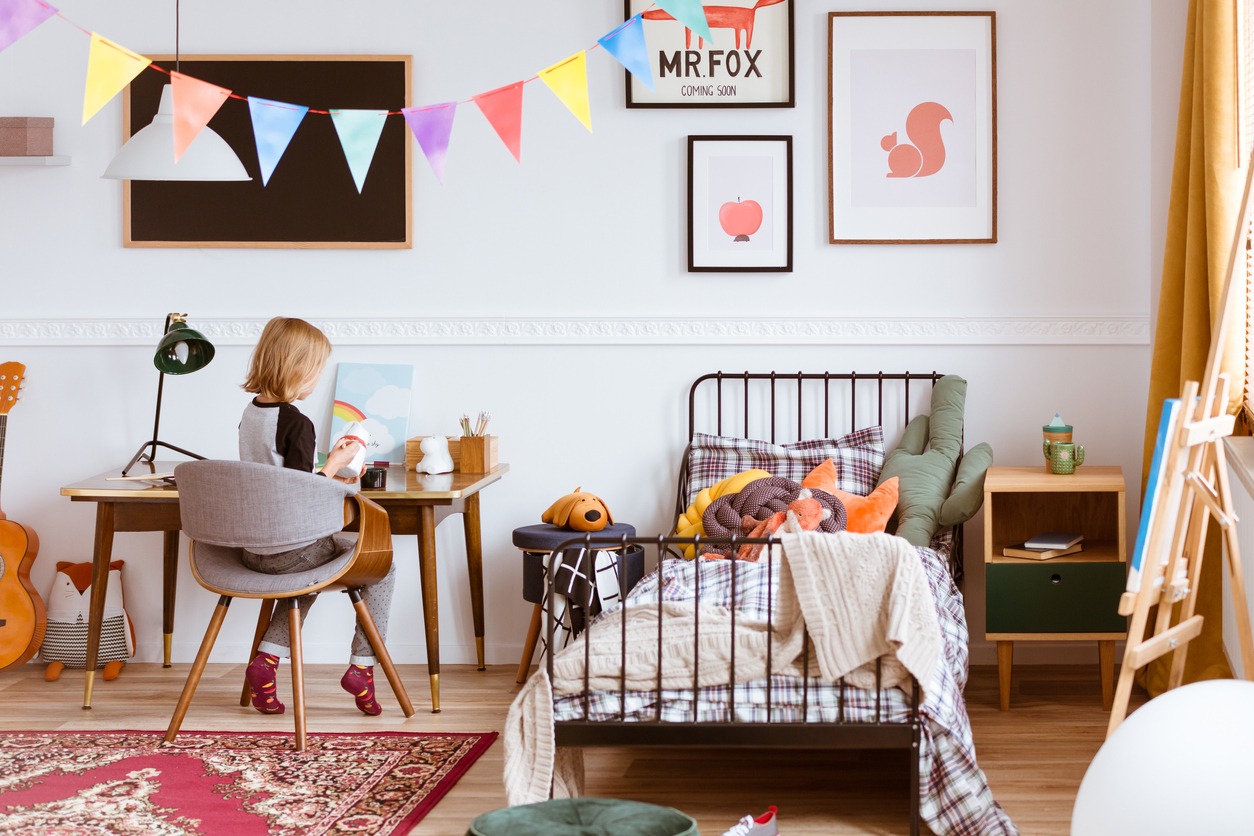Introduction
As parents, we are all familiar with the challenge of keeping our children’s bedrooms clean and organized. When things like clothes piled up, toys lying all over the floor, and books dispersed across the room, it can feel like maintaining order is an uphill battle. However, the significance of maintaining a clean and well-organized environment for your young children extends far beyond its aesthetic value. A well-organized and well-maintained room will benefit your child’s overall health and growth.
Benefits for Both Parents and Children
A well-kept space provides not only an aesthetically pleasing view but also a wealth of other advantages for its occupants, including the parent and the child. For children, having a neatly organized space can improve their cognitive abilities, instill a sense of responsibility in them, and produce an optimal atmosphere for learning and playing. On the other hand, when everything is in its appropriate location, parents can experience lower stress levels and gain valuable time. The advantages accrue to the entire family, which results in a more peaceful environment in the home.
Overview of the Guide
Getting your child’s room in order can be a challenge, but this comprehensive guide is here to help you overcome it with helpful tips, innovative ideas, and innovative approaches. We will cover every aspect of creating a space for your little ones that not only looks great but also encourages a sense of order and responsibility in your children. This will include decluttering the area as well as designing storage solutions.
Assessing the Current Situation:
Understanding the Challenges of Kids’ Room Organization
Before beginning the process of organizing your child’s room, it is important to have a complete comprehension of the obstacles that you will face along the way. Kids, by their very nature, are full of energy and creativity, which frequently results in a room that can quickly become an unruly masterpiece of toys, clothes, and other items. Recognizing these challenges is the first step in the process of putting into effective place solutions.
1. Toy Overload:
Toys are added to a child’s collection at an astonishing rate. To keep things in order, it is necessary to have an understanding of how to control and organize these things.
2. Changing Tastes:
The interests that children have change as they mature. Maintaining order in the space while accommodating these shifts in the environment can be an ongoing challenge.
3. Limited Attention Span:
It’s possible that children don’t always understand how important it is to keep things clean. The most important thing is to find ways to make the organization interesting and suitable for the age group.
Identifying the Needs and Preferences of the Child
Every child has a distinct personality, interests, and set of requirements, and their bedroom should reflect all of those things. Invest the time to learn about your child’s preferences, and then design an environment that celebrates and encourages their uniqueness.
1. Involving the Child:
Inquire with your kid about the things, colors, and topics that they enjoy the most. It is possible to instill in them a sense of ownership and pride in their environment by including them in the decision-making process.
2. Consider Functionality:
Adapt the organization’s solutions to your child’s routines to maximize their effectiveness. If they are avid readers, you should create a comfortable space for them to read. Create a space for them to be creative that is easily accessible with supplies if they enjoy doing arts and crafts.
3. Respecting Privacy:
As kids get older, they have a greater requirement for personal space. Maintain a respectful attitude toward the space they occupy and offer storage options that will enable them to conceal their belongings.
Setting Realistic Goals for the Organization
It’s important to set goals that are both reasonable and doable, even though it can be tempting to imagine your children’s bedroom all neat. When formulating your strategy for the organization, be sure to take into account the age of your child, the stage of development they are currently in, and the lifestyle that your family leads.
1. Age-Appropriate Tasks:
You should give your child responsibilities that are appropriate for his or her abilities. When it comes to taking care of their space, younger children can focus on straightforward tasks like putting away their toys, while older children can assume greater levels of responsibility.
2. Gradual Changes:
Changes in organizational procedures should be phased in. Alterations that are made all of a sudden may be stressful for both you and your child. Introduce any new procedures and practices in a measured manner to facilitate a more seamless transition.
3. Flexibility:
Maintain a flexible approach when adapting the organizational strategies you use. As a result of the rapid pace at which children’s requirements and interests can shift, it is important to be flexible regarding the arrangement of the room and the storage solutions.
An important first step in the process of organizing your child’s room is to take stock of the current state of affairs there. You can lay the groundwork for an effective and long-lasting organizational journey by first gaining an awareness of the obstacles, then determining your child’s requirements and preferences, and finally establishing goals that are in line with reality.
Decluttering and Sorting:
Strategies for Decluttering Toys, Clothes, and Other Items:
Eliminating clutter is the first and most important step in the process of creating a well-organized space for children to play in. Toys, clothes, and other items appear to proliferate in a matter of moments, resulting in an overbearing atmosphere.
1. The Rotation Method:
To maintain the air of novelty and excitement in the space, the toys should be rotated regularly. Keep some of the toys in containers or closets and rotate them out at regular intervals. This not only helps reduce the amount of clutter in your home, but it also reignites your child’s interest in their toys.
2. Storage Bins and Labels:
Invest in storage bins that are fun to look at and easy for children to use. Your child will have an easier time figuring out where their toys belong if you label each bin with pictures and words for them to read. This not only promotes organizational skills but also helps children get a head start on their literacy development.
3. Donate Unwanted Items:
Participating in the act of donating something can help you demonstrate the importance of generosity to your child. Explain that there are children who may not have access to as many toys and that donating items that have been used but are still in good condition is a thoughtful and generous act.
Involving the Child in Decision-Making
Include your child in the decision-making process so that you can make the process of decluttering into a collaborative and educational experience for them. This not only gives them more control over their lives, but it also teaches them how important it is to be careful with the things they own.
1. Explain the Purpose:
Explain to people why it’s so important to reduce clutter. Talk to them about the advantages of having a clean and organized space, such as being able to find their toys more quickly, having more room to play in, and feeling calmer in their surroundings.
2. Choices and Empowerment:
During the process of decluttering, make sure your child has options to choose from. Find out which of their toys they cherish the most and which of them they might be willing to part with. This helps people feel more in control of their lives and gives them more agency.
3. Letting Go Gradually:
Reassure your child that it is fine for them not to keep certain things even if they have a hard time letting go of them. Assist them in comprehending that they can maintain their cherished collection of toys while still making room for fresh adventures and recollections.
Sorting Items into Keep, Donate, and Discard Categories
Developing a methodical strategy for sorting items will make the overall process of decluttering much more manageable and productive.
1. Keep:
Determine the things that your kid genuinely enjoys, that they use regularly, or that have special meaning to them. These are the possessions that will have a home in their room on a more or less permanent basis.
2. Donate:
Help your child let go of toys and clothes that they have outgrown or simply do not use anymore by encouraging them to donate them. Describe the act of giving one’s possessions to someone else who might make better use of them.
3. Discard:
Items that are broken, damaged, or have reached the point where they can no longer be considered safe should be thrown away. Eliminate the potential for these things to add to the mess that already exists by ethically disposing of them.
Instilling important life skills in your child and giving them a sense of responsibility and ownership over their space can be accomplished by involving them in the process of decluttering and sorting their belongings.
Storage Solutions:
Choosing Age-Appropriate Storage Furniture
When it comes to keeping a kids’ room neat, picking out appropriate storage furniture is one of the most important aspects. When selecting storage solutions that are suitable for children of a certain age, keep the following suggestions in mind:
1. Safety First:
Choose pieces of furniture that have rounded edges instead of those that have pointed corners. Make sure the storage units you choose are secure and won’t topple over easily so that your child will have a risk-free environment to play in.
2. Accessible Heights:
Choose child-friendly storage units by taking into account the child’s height when making your selections. This not only fosters a sense of self-reliance in them but also gives them the ability to store and retrieve their belongings on their own.
3. Multi-Functional Furniture:
Invest in pieces of furniture that can serve multiple purposes to make the most of the space you have. Keep an eye out for beds that come with drawers, desks that have shelves, and ottomans that can also be used as storage. These solutions not only reduce the amount of space taken up in the room but also increase its overall functionality.
Utilizing Bins, Baskets, and Shelves Effectively
When it comes to creating an organized space for your children, shelves, bins, and baskets are your best friends. To get the most out of these various storage options, follow these steps:
1. Color-Coding:
Put different kinds of things or activities in charge of their distinct colors. For instance, you could use red bins for your art supplies and blue bins for your toys. This not only lends an air of merriment to the situation but also makes it simpler for your kid to keep track of where everything is supposed to go.
2. Open Shelving:
You might want to think about installing open shelving units in your child’s room so that their favorite books, toys, or decorative items can be displayed. Your child will have an easier time locating the items they require, and the room will have a more personalized feel as a result of your actions.
3. Labeled Bins:
Labeling your bins and baskets is a great way to improve your organization. To effectively communicate the item’s contents, you can either use pictures, words, or a combination of the two. Your child will be better able to identify where each item belongs, and the practice of putting things away will be further reinforced.
Creating Designated Zones for Different Activities
When it comes to maintaining order in the children’s room, a game-changer strategy is to create designated zones within the space. Partition the room into zones designated for the following activities:
1. Play Zone:
Create a space that is solely devoted to play by laying down a plush rug and providing comfortable seating. Encourage your child to put their toys away after playtime by storing them in nearby bins that are easy for them to access.
2. Study Nook:
Create a space that is solely dedicated to studying by furnishing it with a desk and a few chairs. Assuring that there is sufficient storage for school supplies, such as pens, paper, and textbooks, will make it much easier for students to complete their homework.
3. Relaxation Corner:
Build yourself a comfortable reading nook by using a bookshelf, some cushions, and some low-key lighting. Your child will develop a love of reading and the habit of unwinding with a good book if you do this for him or her.
You can lay the groundwork for a well-organized and functional kids’ room by giving careful consideration to the age-appropriateness of the storage furniture, making effective use of bins and shelves, and designating specific areas for a variety of activities.
Labeling and Accessibility:
Importance of Labeling for Easy Identification
It is important not to undervalue the power of labeling when trying to achieve a clean and well-organized space for your children to play in. Labels not only lend a touch of aesthetic appeal to various types of storage solutions, but they also play an essential part in promoting individualism and preserving order.
1. Enhanced Organization:
With the help of labels, it is simple for both adults and children to recognize, at a glance, what is stored in containers, baskets, and on shelves. The daunting task of locating specific items can be turned into a straightforward and time-saving process with the help of this one simple addition.
2. Early Literacy Development:
The development of early literacy is aided by the use of labels that contain both words and pictures. Children start making connections between words and the things around them, which is an enjoyable and engaging way for them to build their language skills.
3. Visual Appeal:
Choose labels that are vibrant and visually appealing and that correspond with the overall motif of the room. Your child will find the process of organization to be more interesting and enjoyable as a result of this, in addition to the playful touch it adds.
Ensuring Items Are Accessible to the Child
Making items easily accessible to your child is essential if you want them to actively participate in keeping their room clean and organized. Children are more likely to take responsibility for their belongings if they are within easy reach of those belongings.
1. Low-Level Storage:
Put items that are used frequently in low-level storage solutions so that your child can access them without difficulty. Toy bins, art supplies, and books are included in this category. Providing your child with accessibility not only fosters a sense of ownership but also encourages them to be independent.
2. Open Shelving:
Take into consideration installing open shelving units at your child’s eye level in your home. Because of this, they can independently view and access their belongings, which contributes to a sense of increased autonomy.
3. Rotating Items:
Consider rotating the items you store in areas of your home’s storage that are difficult to reach, such as high shelves, regularly. Your child will not require your assistance to play with a variety of toys and items if they are stored in this manner.
Teaching Children the Importance of Returning Items to Their Designated Places
Your child needs to learn early on how important it is to put things back where they belong for you to be able to keep their room neat. This is one of the most important lessons you can teach your child.
1. Lead by Example:
Most of the time, children learn by watching others. Establish and maintain the routine of returning things to the locations to which they were originally assigned by doing so yourself consistently.
2. Consistent Reinforcement:
Instruct your child to regularly pick up after themselves and encourage them to do so. Establish a routine for daily cleanup, and then compliment them on the work they’ve done. When it comes to strengthening positive habits, consistency is essential.
3. Explain the Benefits:
For your child to understand the importance of putting things back in their proper places, you should assist them in doing so. Explain that it makes things easier to find, maintains the room’s appearance of cleanliness, and ensures that their favorite toys are always ready to be played with.
The combination of labeling items for simple recognition, making sure that the items in question are within the child’s reach, and emphasizing the significance of putting things back in their appropriate locations produces an environment that is conducive to maintaining an orderly children’s bedroom.
Incorporating Fun and Creativity:
Making Organization a Fun and Engaging Process
Creating a neat and orderly atmosphere in a room occupied by children does not have to be a laborious and uninteresting undertaking. Not only will you make the process of organization enjoyable by injecting a sense of play and creativity into it, but you will also cultivate a constructive attitude toward maintaining a clean and orderly environment.
1. Playful Labels and Signage:
Choose labels that are whimsical and brightly colored rather than boring ones. You might want to think about making whimsical signs to label the various storage areas. This could turn an organization into a fun game involving matching pictures and words.
2. Music and Timers:
Playing upbeat music or setting a timer can help transform the time spent cleaning up into a fun activity. Set a race against the clock for your child to finish the clean-up before their favorite song is over or the stopwatch goes off. The task now has a sense of both excitement and urgency thanks to this addition.
3. Reward System:
Establish a system of recognition and compensation for ongoing organizational efforts. Your child might benefit from having a sticker chart, on which he or she would earn a sticker for every successful cleanup attempt. They should be rewarded with a special privilege or a tasty treat once they have collected a predetermined number of stickers.
Creative Storage Solutions that Appeal to Children
The utilization of storage solutions that not only fulfill a useful function but also capture the interest and enthusiasm of your children is essential to the success of your efforts to keep your children’s room neat.
1. Themed Storage:
Put your child’s interests into consideration when choosing storage solutions for them. Whether you want to go with a superhero theme, a princess palace theme, or a jungle adventure theme, adding themed storage bins, baskets, and shelves to an organization project can turn it into an exciting adventure.
2. Interactive Furniture:
Invest in furniture that can be used both as a sitting area and a play space. For instance, a storage bench can also serve as a cozy reading nook, which makes it possible to integrate play and organization seamlessly.
3. DIY Decor:
Put your ingenuity to use by tackling some do-it-yourself decorating projects. Your child and you can turn some plain storage bins into personalized treasure chests for their toys by painting and decorating them together. This not only lends an air of originality to the overall design but also gets your child involved in the process.
Involving Kids in DIY Organizational Projects
Involving your child in do-it-yourself (DIY) organization projects is a great way to give them more responsibility. This not only fosters their creative potential but also increases the feeling of ownership they have over the space they occupy.
1. Decorative Labels:
Collaborate on the creation of aesthetically pleasing labels. To create labels that are unique to your child and reflect his or her personality, you can use art supplies, colorful markers, and stickers. This do-it-yourself approach transforms the act of organization into a cooperative and satisfying endeavor.
2. Customized Storage Solutions:
Include your child in the process of personalizing storage solutions. Give them the freedom to select the hues, patterns, or concepts that they want for the storage bins and shelves. This not only gives these areas a more personalized feel but also encourages people to utilize and care for them more frequently.
3. Artistic Wall Displays:
Create a space in your home where you can display the artwork that your child has created. Build them a gallery wall where they can hang their paintings and drawings to show off their talents. This not only helps to keep the room tidy but also acknowledges and encourages your child’s creative side.
Not only will you be able to keep your child’s room neat, but you will also be able to foster an environment that is positive and enjoyable for your child by making the process of organization enjoyable and interactive, incorporating inventive storage solutions, and involving kids in do-it-yourself organizational projects.
Conclusion
The goal of this guide is to help parents achieve their goal of a clean and well-organized bedroom for their children by examining a variety of approaches that can be utilized to convert an area of disorder into one that fosters harmony and creativity. De-cluttering, sorting, selecting storage solutions that are appropriate for the child’s age, labeling, and infusing fun and creativity are all essential steps in the process of developing an environment that fosters both order and imagination.
Keep in mind that the journey to organization is not just about neatness; it is also an opportunity to teach your child valuable life skills. A positive and long-lasting impact can be achieved by giving the individuals a voice in the decision-making process, teaching them responsibility, and making the activity enjoyable.
Take your time, be flexible, and remember to celebrate even the most insignificant of your accomplishments as you make your way through this organizational journey. You will not only instill a sense of order in your child if you design a room in which his or her personality and passions are reflected, but you will also be cultivating an atmosphere in which education and original thought can thrive.



